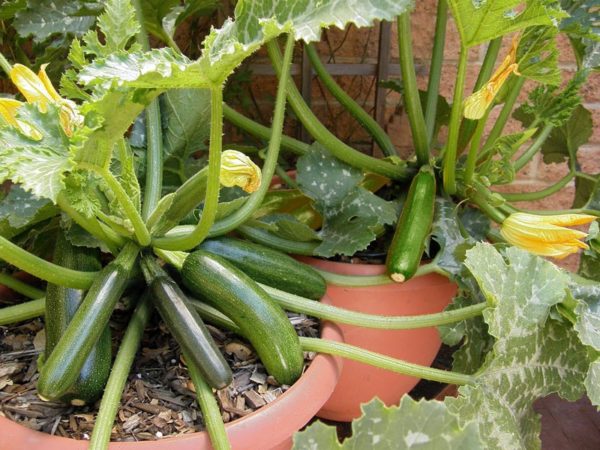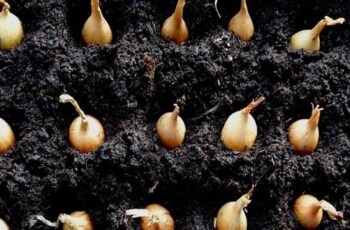Ad Blocker Detected
Our website is made possible by displaying online advertisements to our visitors. Please consider supporting us by disabling your ad blocker.

How to Grow Zucchini at Home in a Container- 10 Secrets To Produce More Zucchini
Growing zucchini in a bucket is an excellent option for those with limited gardening space or who want to experiment with container gardening. This practical approach allows for a successful harvest even in small areas, such as patios, balconies, or urban gardens. Zucchini plants are known for their versatility and adaptability, making them an ideal choice for growing in containers.
In this article, we will explore the necessary steps for setting up the perfect environment for zucchini to thrive in a bucket. From selecting the right container and potting mix to planting methods and ongoing maintenance, by following these guidelines, even novice gardeners can enjoy the benefits of ripe, homegrown zucchini.
Understanding the requirements for growing zucchini in a bucket is crucial to its success. Adequate sunlight, proper watering, and ensuring enough room for growth will contribute to a fruitful harvest. Stay tuned for specific recommendations and expert tips on how to grow healthy, productive zucchini plants in the comfort of your own home or outdoor space.
Choosing the Right Container
When growing zucchini in a bucket, selecting the appropriate container is essential for a successful harvest. This section will cover the materials and size considerations for your zucchini container.
Materials
Different materials can be used for zucchini containers, but the most common ones are plastic and glazed ceramic. Both options have their advantages:
- Plastic: This material is lightweight, affordable, and readily available. It insulates the plant’s roots from temperature fluctuations and can maintain consistent moisture levels in the soil.
- Glazed Ceramic: A glazed ceramic pot is more rigid and durable than plastic. It provides excellent drainage and can add an aesthetic appeal to your garden. However, it can be heavier and may require extra maintenance to prevent cracking.
Whichever material you choose, ensure that your container has drainage holes in the bottom to avoid waterlogging and facilitate proper plant growth.
Size
The size of the container plays a crucial role in the development of the zucchini plant’s roots. Here are some guidelines to follow:
- Aim for a bucket that is at least 16 inches deep and 12 inches wide, as zucchini plants have deep roots. This size allows for the long taproot and other root structures to spread out properly.
- A 5-gallon bucket is an appropriate choice for one zucchini plant since it provides enough space for the roots to expand.
- In general, a container that is 18 inches wide and 12 inches deep can also work for a single zucchini plant, as long as it has good drainage.
- By selecting the right container and following appropriate care instructions, you can enjoy a bountiful harvest of zucchini from your carefully chosen bucket.
Selecting Zucchini Varieties
When choosing the right variety of zucchini to grow in a bucket, gardeners should consider factors such as size and growth habits. Smaller varieties are more suitable for container gardening. Two popular zucchini varieties that are well-suited for growing in buckets are Astia and Raven.
Astia
Astia is a French heirloom zucchini variety that is specifically bred for container gardening. It is a bush variety, which means it grows in a compact habit, making it perfect for small spaces. Astia zucchini offers the following characteristics:
- Compact size: Grows up to 18 inches tall and wide
- Early maturity: Ready for harvest in about 50 days
- Disease resistant: Less susceptible to common zucchini diseases
- High yield: Produces an abundant number of fruits throughout the growing season
Raven
Raven is another good option for growing zucchini in containers. This hybrid variety exhibits these features:
- Medium size: Grows up to 24 inches tall and wide
- Quick maturity: Harvest-ready in approximately 55 days
- Disease resistant: Also less susceptible to common diseases
- High yield: Continues to produce fruits all season long
Both Astia and Raven are classified as summer squash, which means they have a tender skin that’s easy to eat without peeling. They are both considered courgettes, a term often used interchangeably with zucchini. Courgettes are simply a type of summer squash that has a similar appearance to zucchinis but often comes in different shapes and colors.
When selecting zucchini varieties to grow in a bucket, it’s essential to consider disease resistance, adaptability to container gardening, and the desired harvest timeline. Astia and Raven have proven themselves as two great options for this purpose, offering abundant yields and suitable growth habits for limited space.
Preparing the Potting Mix
When growing zucchini in a bucket, it’s essential to prepare a well-draining and nutrient-rich potting mix. Start by choosing a high-quality container potting soil as your base. Garden soil should be avoided, as it can compact and make it difficult for zucchini roots to grow.
To improve drainage and prevent waterlogging, add amendments to the soil. These can include:
- Vermiculite: This mineral is excellent for aerating the soil and helping with water retention.
- Sand: Coarse sand ensures good drainage and prevents the potting mix from becoming too dense.
- Perlite: Lightweight and porous, perlite improves drainage and aeration in the soil.
In addition to these amendments, consider incorporating organic matter for better moisture retention and added nutrients. Options include: - Peat moss: A popular choice for moisture retention, peat moss also provides trace elements to the soil.
- Coconut coir: An environmentally-friendly alternative to peat moss, coconut coir helps retain moisture without becoming waterlogged.
Before filling your 5-gallon bucket with your prepared potting mix, ensure there are drainage holes at the bottom. This will allow excess water to escape, preventing root rot and other issues with your zucchini plant.
Once your potting mix is ready, don’t forget to mix in an appropriate fertilizer according to the manufacturer’s directions. This will supply your zucchini plant with essential nutrients throughout its growth. With a well-prepared potting mix, you’ll be on your way to growing a healthy and productive zucchini plant in a bucket.
Planting and Transplanting
Starting from Seeds
Before planting your zucchini seeds, choose a bucket or container with at least 5 gallons (19 liters) capacity and drainage holes to accommodate the plant’s large tap roots. Fill the bucket with well-draining soil, preferably enriched with compost or organic matter, which provides nutrients to the growing plant.
To start seeds, sow zucchini seeds indoors around 4 to 6 weeks before the last frost date in your area. The optimal temperature range for zucchini seeds to germinate is between 60°F (16°C) and 70°F (21°C). Plant the seeds 1 inch deep and 2 to 3 inches apart in the container. It’s important to keep the soil consistently moist but not overly saturated.
Once the seedlings emerge, they require at least six hours of sunlight per day, so be sure to place the container in a sunny location.
Transplanting Seedlings
If you have purchased zucchini seedlings from a garden center or have started seeds indoors, wait until the last frost date in your area has passed and the seedlings have at least two sets of true leaves before transplanting them into your container.
To transplant seedlings:
- Gently remove the seedlings from their growing pots, taking care not to damage their delicate roots.
- Dig a hole in the soil of the container (slightly larger than the root ball of the seedling) and carefully place the seedling in it, making sure the roots are fully covered.
- Space the seedlings about 2 feet apart to ensure adequate airflow and prevent overcrowding.
- Water the transplanted seedlings thoroughly to help them settle into their new environment.
For vining zucchini varieties, a trellis should be added to the container, giving the plants support as they grow. Ensure the trellis is installed with a minimum of 4 feet of space for the plants to climb.
Once the transplanting is complete, continue to monitor the plant’s water requirements and sunlight exposure, adjusting as necessary for healthy growth. Regularly check for signs of pests or diseases, and treat them promptly to maintain a thriving zucchini plant in your bucket.
Watering and Fertilizing Zucchini in a Bucket
Watering Tips
Zucchini plants require consistent and sufficient watering to thrive. In a bucket, it’s essential to maintain moist soil without overwatering. Keep the following tips in mind when watering zucchini in a bucket:
Water zucchini plants at least once a week with approximately 1 inch of water.
Ensure the soil is moist 4 inches down—long soakings are best.
Place the bucket near a water source like a hose or watering can to make it easier to maintain consistent watering.
Be mindful during periods of fruit formation, as zucchini plants need diligent watering during this time.
Providing Nutrients
Providing nutrients is crucial for successful zucchini growth in a bucket. Nutrients can be supplied through compost, fertilizer, peat moss, or mulch. Here’s how to maintain proper nutrient levels:
- Compost: Add a layer of compost to the top of the bucket’s soil before planting the zucchini seeds. This will slowly release nutrients into the soil.
- Fertilizer: Apply a balanced 10-10-10 fertilizer once a month to keep nutrients flowing in the soil. Spread a thin layer of fertilizer evenly on the top of the soil. Avoid using excessive amounts to prevent burning the plant roots.
- Peat Moss: Mix peat moss into the soil before planting the seeds. It helps retain moisture and adds beneficial organic materials to the soil.
- Mulch: Adding a layer of mulch to the top of the soil will help retain moisture and discourage weed growth. Organic mulches, such as straw or wood chips, will gradually decompose, adding nutrients to the soil.
By following these watering and nutrient-providing tips, you’ll be well on your way to successfully growing zucchini in a bucket. Remember to monitor the plant’s moisture levels and nutrient needs closely to ensure a healthy, bountiful harvest.
Maximizing Sunlight and Temperature
When growing zucchini in a bucket, it is essential to provide the plant with sufficient sunlight and temperature to promote optimal growth. Zucchinis need at least 6 hours of direct sunlight each day, so it’s crucial to place your bucket in a spot that receives full sun. If necessary, move the bucket around your outdoor space to chase the sun throughout the day, or ensure the location you choose doesn’t receive too much shade.
Temperature also plays a significant role in zucchini growth. Zucchinis thrive in warm temperatures, generally between 60-80°F (16-27°C). Monitor the temperature around the bucket and avoid placing it in an area where temperature extremes may occur. For instance, avoid placing your zucchini bucket near heat or air-conditioning vents, as this can cause significant fluctuations in temperature, potentially negatively affecting your zucchini plant.
To further improve temperature control, consider using a temperature-controlled greenhouse, especially during the early stages of growth. A greenhouse can help maintain an ideal temperature for zucchini growth and block cold drafts or gusts of wind that could cause temperature fluctuations.
Humidity is another factor to consider in zucchini growth. Zucchinis prefer a moderately humid environment. If humidity levels are too low, the plant may struggle to absorb moisture from the soil, resulting in suboptimal growth. On the other hand, excessive humidity can lead to fungal diseases and other issues. Monitor humidity levels and adjust as needed by watering the plant more often in low humidity and keeping air circulation around your zucchini bucket during periods of high humidity.
In summary, to maximize sunlight and temperature for zucchini growth in a bucket:
- Place the bucket in a location that receives at least 6 hours of direct sunlight
- Monitor and maintain a consistent temperature range of 60-80°F (16-27°C)
- Consider using a temperature-controlled greenhouse for additional control over the growing environment
- Maintain a moderate level of humidity and adjust as needed through watering and air circulation practices
Supporting Your Zucchini Plant
Using Tomato Cage
To support your zucchini plant growing in a bucket, you can use a tomato cage. Tomato cages are an excellent way to provide support and prevent the plant from sprawling. Here’s how to use a tomato cage for your zucchini plant:
- Choose a tomato cage that is at least 3 feet tall with a diameter that fits within the rim of your bucket.
- Insert the legs of the cage into the soil in the bucket, ensuring it is stable and centered around the zucchini plant.
- As the zucchini plant grows, gently guide the vines through the cage’s openings. This will help train the plant to grow upward instead of sprawling on the ground.
Using a tomato cage not only provides support to the plant but also helps improve air circulation, reducing the risk of diseases.
Trellis
Another common and effective support structure for zucchini plants is a trellis. This method requires a bit more installation work but will provide a more aesthetic appeal and better support. Follow these steps to install a trellis for your zucchini plant:
- Choose a trellis that is sturdy, easy to maneuver, and at least 3 to 4 feet tall.
- Install brackets or hooks on the side of the bucket to hold the trellis in place.
- Attach the trellis to the brackets or hooks securely.
- Guide the zucchini vines onto the trellis as the plant grows. You may need to use soft ties or garden twine to secure the vines in place.
In addition to providing support, using a trellis can help increase sun exposure to the plant and improve overall health. Remember to monitor the growth of the zucchini plant and adjust the support system accordingly. A well-supported zucchini plant will produce healthy fruits and prevent damage to the plant due to heavy fruit loads.
Pest and Disease Control
Zucchini plants grown in buckets can be less susceptible to pests and diseases due to the controlled environment. However, it is still essential to monitor and manage potential issues for healthy growth.
There are several common pests that can infest zucchini plants:
- Aphids
- Cucumber Beetles
- Cutworms
- Leafminers
- Spider Mites
- Squash Bugs
- Squash Vine Borers
- Thrips
- Whiteflies
To manage these pests, consider implementing the following strategies:
- Regularly inspect plants for pests and remove them manually, if possible.
- Use organic or chemical insecticides specifically designed for the targeted pests.
- Introduce beneficial insects, such as ladybugs or lacewings, to control aphids and other soft-bodied pests.
As for diseases, zucchinis can be affected by:
- Powdery mildew
- Downy mildew
- Bacterial wilt
- Mosaic virus
Take these steps to prevent and control diseases in zucchini plants:
- Ensure proper drainage in the bucket to prevent standing water and maintain well-draining soil.
- Water the plants at the base rather than overhead to minimize moisture on the leaves.
- Regularly remove any dead, damaged, or diseased foliage.
- Apply a fungicide or use a homemade solution like a baking soda spray to treat fungal diseases.
In addition, companion planting can help deter pests and improve the overall health of zucchini plants. Here are some suggested companion plants for zucchinis:
- Nasturtiums: Repel squash bugs and aphids.
- Marigolds: Deter nematodes and whiteflies.
- Borage: Attracts beneficial insects and can deter certain pests like tomato hornworms.
- Radishes: Act as a natural repellent for squash bugs.
By implementing these pest and disease control measures, you can enjoy a successful and healthy zucchini plant in your bucket.

